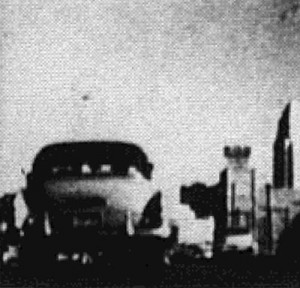
"A fast ride through the mountains, over the desert, and on to the freeways to the accompaniment of a superb sound track. An audio-visual experiment designed to elicit a response from the audience. You cannot help but become a part of the "tempo" PSA Journal, Oct. 1963, 42.
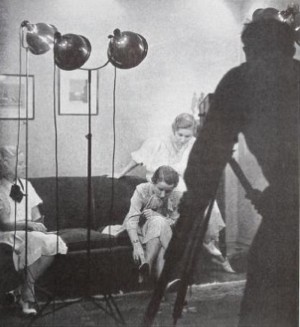
"In Chicago, the Cinema Players have recently completed a one reel, 16mm. comedy, Ten Easy Lessons, the first major production from this new group. The story was directed and photographed by George W. Colburn, ACL, and presents in leading roles Jules Brunner, Louise Byrne, Rudolf Heinkel, DeEtta Kenny, Greta Brunner, Charles Byrne, Evelyn Heinkel and Evelyn Colburn." Movie Makers, Nov. 1935, 476.
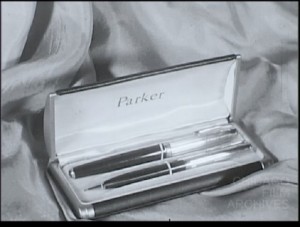
"Short documentary about fountain pen repairs and the process of repairs within a fountain pen hospital. The film begins with a client handing over his pen to the receptionist. From there the pen goes to Robert "Doc" Davis, who performs a nine point check-up on the pen. This is followed by exploded views of various pen models, including the Schaeffer Triumph, Parker 51 and the Eversharp Skyline. Last, the film shows how gold lettering is used on both pends and leather goods. Outtake scenes of the pen hospital and its employees follows the film." Chicago Film Archives.
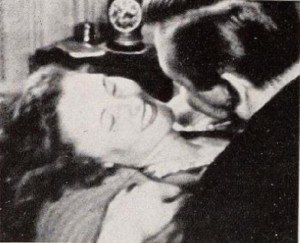
"Novel continuity, beautiful cinematography and a nosegay of feminine charms are the distinctive features of Ten Pretty Girls, produced by Anchor O. Jensen. This expert little drama, made on 8mm Kodachrome, is an excellent example of quality workmanship in that width. The opening scene shows a young man contemplating his address book. He folds a large piece of paper and cuts from it a string of ten dolls, which become the symbols of as many lovely young women. As each doll is torn from the group, a new sequence featuring one of the girls is introduced. A different flower, corsage or bouquet figures in the action as each of the girls is shown in some individual and flattering setting. At the conclusion, the young man has made his choice; he spurns the blondes and brunettes for the favors of a titian beauty." Movie Makers, Dec. 1943, 474.
"Okamoto's heroine was a Japanese girl making a doll as a birthday present for a friend. Pictorial values, backgrounds of the Japanese countryside in spring, and the delicate grain which Cinematographer Okamoto had achieved gave his film distinction." American Cinematographer, Feb. 1935, 78.
"'Tender Friendship,' in 150 feet of 8mm film, was sensational from the photographic standpoint. Its sheer beauty, its poetic rhythm both in story and photography, made it one of the outstanding pictures of the contest" American Cinematographer, Dec. 1934, 365.
"A short amateur film distributed by the Society of Amateur Cinematographers (SAC)." Chicago Film Archives
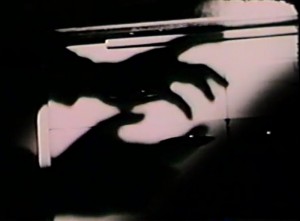
Thriller film about an escaped murderer, and a nearby woman who is home alone.
"EL TERCER SUSPIRO. Separa de un grupo de paseantes en la Alameda a un joven que al aceptar la invitación a subir a un auto que le hacen tres desconocidos (identificados con el movimiento revolucionario de 1910, mediante un montaje de fotografías de la época), durante el paseo por el Periférico se ve acometido por una serie de evocaciones imaginarias. Primero se le ve huir del coche saltando a un paso de peatones, y ser acosado a través de casas derruidas. Al regresar al tiempo presente uno de los hombres le pone la mano en un revólver. Después se ve en un lugar desierto, penosamente sostenido en pie por un aparato ortopédico, mientras una marea creciente lo empieza a cubrir. En ese punto desciende del coche en marcha y se coloca en el centro de la carretera, amenazando con el arma a algo que se aproxima; pero antes de que se produzca el disparo evoca un encuentro amoroso. Esta acción se repite varias veces antes de disolverse en las imágenes de un lago que ahora lo ha cubierto todo"(Garmendia en Vázquez Mantecón, 2012).
"THE THIRD SIGH. Separates a young man from a group of pedestrians in the Alameda, when he accepts an invitation by three unknown men to get into a car (the men were identified with the revolutionary movement of 1910 through a photographic montage of the time), during the ride through Periférico, he is undertaken by a series of imaginary evocations. First he is seen running away from the car, jumping to a crosswalk, and being harassed through demolished houses. When coming back to the present, one of the men puts his hand on a revolver gun. Afterwards, he is seen in a desert place, shamefully sustained by an orthopedic device, while a rising tide starts to cover him. At this point he descends from the moving car and goes to the center of the highway, menacing with his gun something that is approaching; but before the shot is produced, a loving encounter is evoked. This image is repeated several times before dissolving into images of a lake that has now covered everything" (Garmendia in Vázquez Mantecón, 2012).
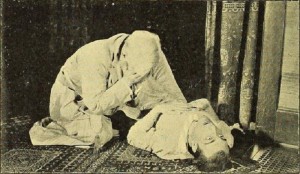
"The production of the Flower City Amateur Movie Club of Rochester, N. Y., Terror, 400 ft., 16mm., was written and directed by Frank J. Buehlman. It was recently screened as a special, added feature on a week's run at the Little Theater in Rochester. Terror is a psychological study of the effect of fear. Its story is based on a practical joke engineered by friends of the victim who, to the end of the film, remain ignorant of the disastrous results. As the story develops, we see the commonplace incidents of every day life through the eyes of the fear obsessed principal character. The handling of the theme required great care but the producers succeeded in making the highly fantastic reactions of the character seem plausible. With its exquisite lighting effects and the dramatic power achieved in the climactic sequences through cinematography, this film is certainly outstanding." Movie Makers, Dec. 1930, 759.
"Two popular subjects make up this short amateur film - cricket and aircraft. After scenes of bi-planes, we visit the Ashes 4th Test at Old Trafford in July 1930. After the toss between captains Bill Woodfull and Percy Chapman, the crowd applauds cricketers onto and off the field. This test match fell foul of the Lancashire weather and had to be left drawn, rain stopping all play on the last day." (BFI Player)
Total Pages: 299